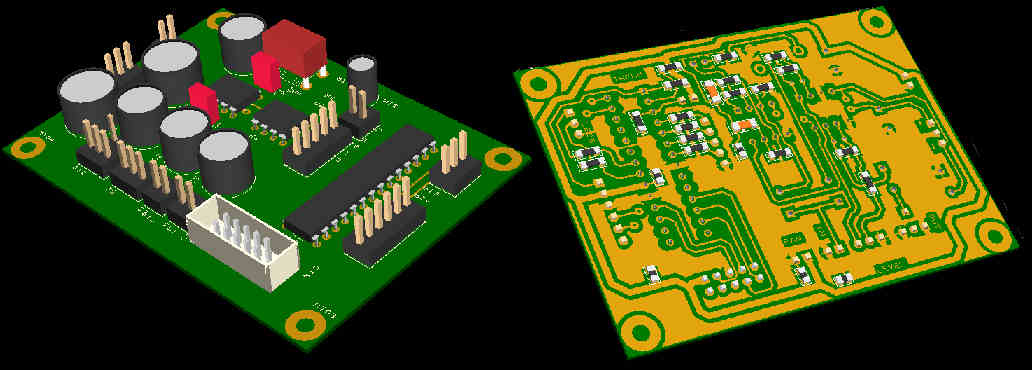

|
 |
It is well known that us bassists require significantly more power than guitarists in order to push out a level of volume that stands a chance of giving any clarity on stage, and whilst their meagre 50W combo will allow their thin screeching noise to penetrate even the most defended of ears, we need around 5 times more power to even be heard. The problem with getting this much power is that things start getting big and heavy due to the transformers required. Things are even worse for valve amplifiers, but I have never had much success with them regarding reliability on the road so I only refer to solid state amps from here on.
My interest was drawn to an advert in an industry magazine that touted a new range of small digital amplifier modules that offered 600W output from the aptly named www.amplifier.co.uk website. These modules are made by MagnaTec and promised massive output power, high efficiency and low weight - so I investigated further. After a conversation with MagnaTec, I purchased an evaluation module (SDV-1015) including protection circuitry and the output filters, and the accompanying switchmode power supply (SDV-1024-600): total cost around £150. While I was waiting for them to arrive, I quickly knocked together a 19" 1U rack case out of scrap aluminium, and drew up a layout digram for wiring.
As you can see, everything fits fairly neatly into the case!
Specs:
Apart from these enticing specs, the most important factor for me is the way digital amplifiers sound. Since the power supply used is a switchmode type, the resevoir capacitors are refreshed many more times per second than typical 50Hz linear PSUs, and for bass use this equates directly to more punch and a much tighter sound. Trust me on this - if you care about your tone, try a digital amplifier and you'll never go back to linear! I run my Warwick 6 string thumb bass through two Ashdown cabs (mini48 and mini115) from this amp and this combination is enough to shake the fillings out of everyone in the room... <grin>
I've been using this amp now for about 4 years without any reliability concerns, and it has proved to be very capable for everything from jam nights to festivals. Since building this amp, MagnaTec have bought out several new models, one of which is a stereo version of this system in a 1U rack featuring a massive 1200W output for only £350. This would allow you to drive 4x 8ohm cabs at fiull power which is guaranteed to irritate any guitarist, or you could just leave one channel as a redundant spare? The only reason I do not yet own one of these is because my bass rig is set up in a shallow Gator rack and the stereo amp case is 19" deep so it wouldn't fit. Dagnabbit...
For the front panel, I wanted a minimal look so initially I drilled a couple of holes for the 'hot' air to escape and I fitted a single blue power led. After the first couple of rehearsals, it soon became clear that the airflow system I had fitted is total overkill! At 90% efficiency, and running about 50% full volume, the amp dissipates around 30W which is easily dealt with by the aluminium case. Nevertheless, I have left the fans in situ for peace of mind, although I did rewire them to run at half speed (12V fans on a 5V supply). This reduces the noise and vibration they cause, and vastly increases their life expectancy. Back to the front panel... I soon decided that the minimal look was ok, but I wanted the amp to show itself off a little instead of looking like a blanking plate! I have used the Noritake-Itron graphic VFD modules on a project at work and I thought that they would offer a bit of pizazz for the front panel, so I purchased another one from Farnell and cobbled together a PIC board to drive it.

Shameless self promotion...
I live in hope of this day coming...
The PIC board monitors the audio input to the amp and displays a simple bargraph to show activity. If no audio is detected for around 10 seconds, the display shows a sequence of odd images for absolutely no reason other than it seemed like a good thing to do with a graphic display!
The images are drawn in Microsoft paint as a 140x16 jpeg, and I wrote a simple bit of VB code to convert them to a hex listing that I could just paste into my code - this makes it very simple to change the images at any point.

Downloads: